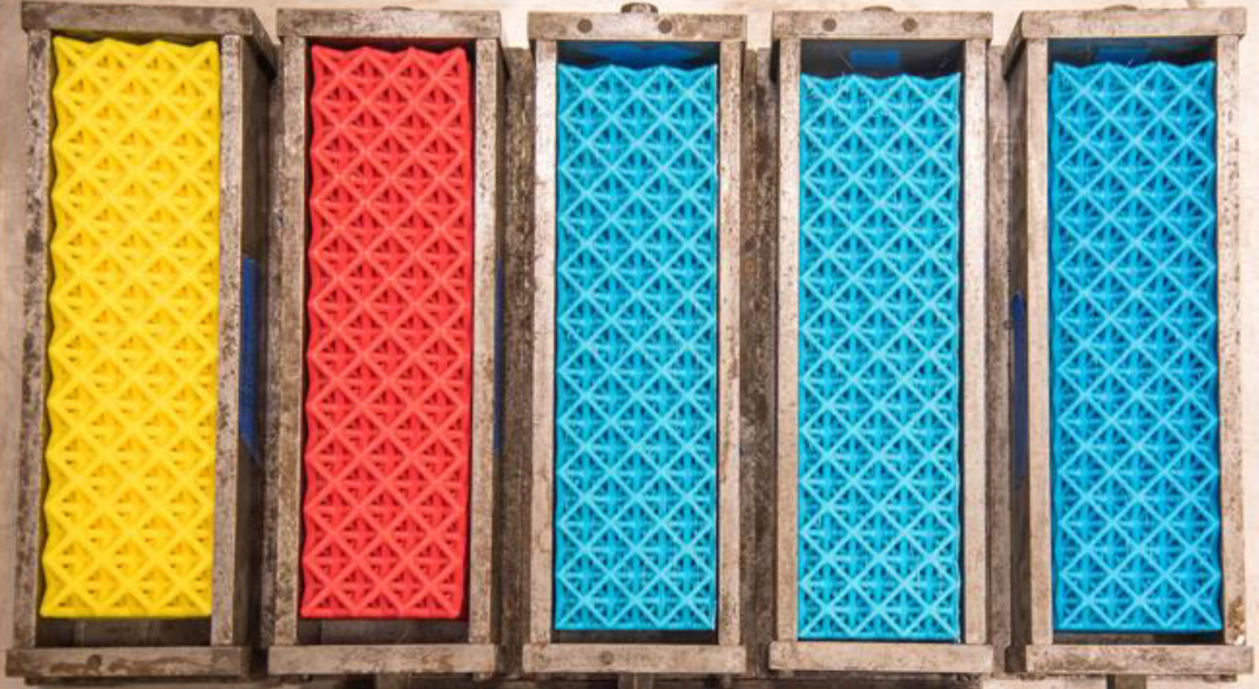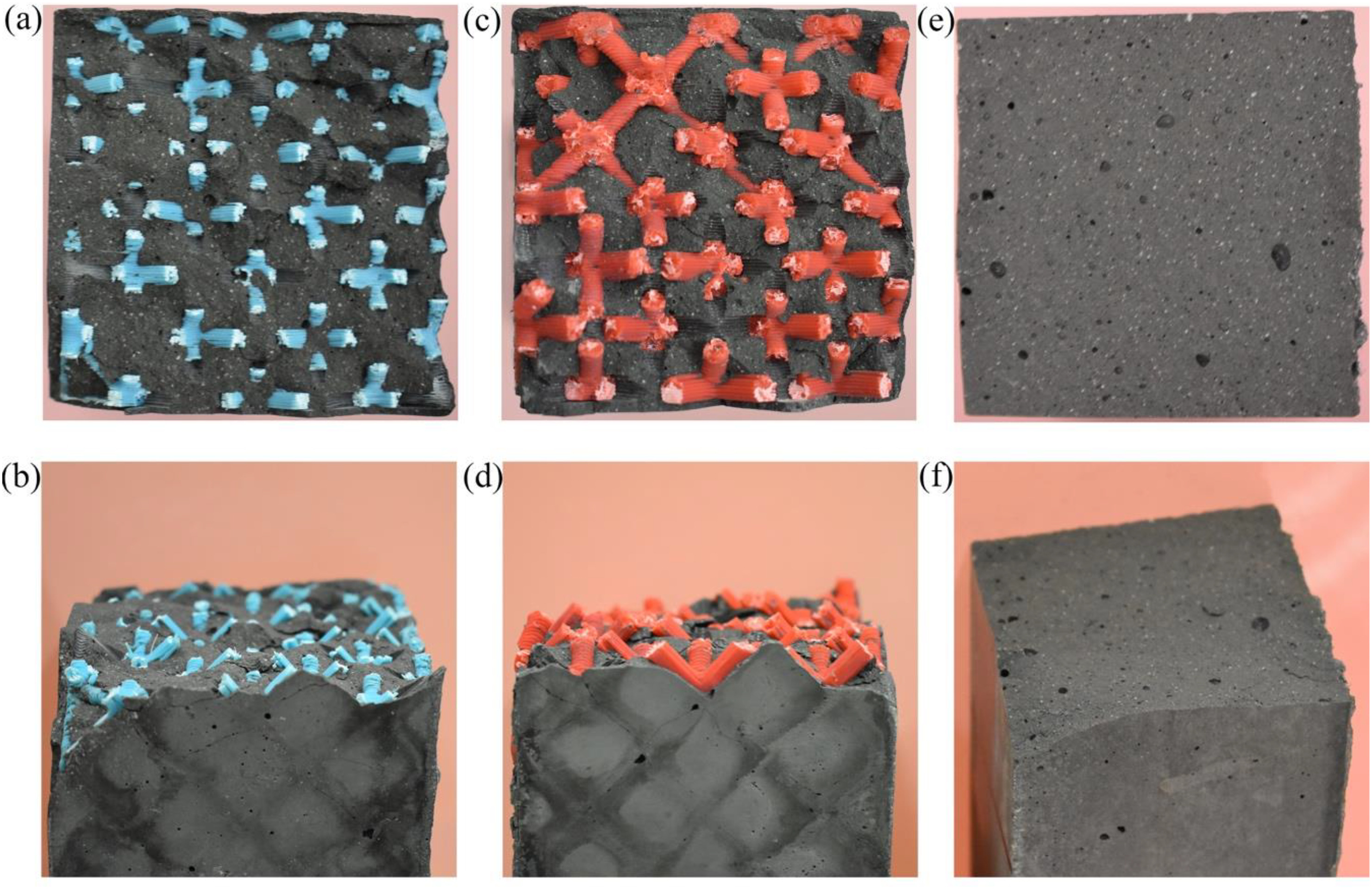A team of researchers from UC Berkeley have developed an innovative new method of incorporating 3D printed polymer octet lattices into concrete structures, whereby the polymer acts as a reinforcement.
Using the lightweight polymer lattices, it is possible to cut concrete content down by around 33% in the mixture, decreasing the overall weight of the structure while also increasing its ductility. The lattice-reinforced structure has also been shown to be just as load-bearing as traditional cement, drawing on the best of both worlds.
Brian Salazar, the lead author of the study, explains the motivation behind the work: “As we’re building more and more complex structures, I think it’s important for us to know, ‘How is it that we can best reinforce that structure?’. At the moment, there are just some traditional techniques that you use to reinforce structures that have been going on for decades, and there hasn’t been too much questioning of whether that’s the best way to be reinforcing things.”

The drawbacks of cement
The traditional ceramic cement mix makes for a fantastic load-bearing structure, and is accessible enough to be available as a construction material pretty much anywhere in the world. However, on its own, it is known to be extremely brittle, enabling cracks to propagate throughout a structure with ease when under tension. While steel rebars are generally the go-to reinforcement method, they can be costly, heavy, and prone to corrosion – not ideal.
Cement production is also reportedly a major contributor to atmospheric CO2, and is thought to be responsible for up to 8% of the world’s emissions. By cutting down on concrete usage even by a thin margin, this can have a significant effect on both the local and global environment when scaled up.
Hayden Taylor, the study’s corresponding author, explains: “The reaction that produces cement inherently produces CO2. In contrast, there is a conceivable route toward polymers that are net carbon-neutral or even potentially carbon-negative through the use of biopolymers, recycling and renewable energy sources.”

Polymer lattice-reinforced concrete
The Berkeley researchers first had to select the optimal geometry for their 3D lattices, and eventually settled on the octet truss – an isotropic structure popularized by the architect Buckminster Fuller in the mid-20th century. The geometry is both strong and light, and more importantly, comprises arms extending out in every direction. Initial compressive loading tests on an FDM-printed ABS octet yielded some promising results, with very high strain density and energy absorption values.
The engineers then filled a set of octet lattices of varying densities with a high-performance cement, as you would an array of steel rebars. The thinnest lattice structure comprised 19.2% of its mixture’s volume while the thickest comprised 33.7%.
Interestingly, while increasing the total polymer content of a sample did decrease its overall compressive strength, it also increased the sample’s peak load without significantly altering the structure’s mechanical properties. This meant that the toughness of the block remained virtually constant, despite a very significant reduction in cement usage of 33.7%. Riding off the back of the promising experiment, the next steps of the study involve trialing various novel lattice geometries to find the best ones.
Further details of the study can be found in the paper titled ‘Polymer lattice-reinforcement for enhancing ductility of concrete‘. It is co-authored by Brian Salazar et al.

The strengths of 3D printing have been shown time and time again in the construction sector. Researchers from ETH Zurich recently used 3D printing in conjunction with casting methods to devise an “eggshell” concrete 3D printing process. Combining large-scale FDM printing with the simultaneous casting of a fast-hardening, set-on-demand concrete, enabled the team to produce complex structures in a more material-efficient way.
Elsewhere, in Texas, construction firm ICON has previously partnered with the U.S. government to demonstrate the military applications of 3D printing at the Camp Pendleton Marine base. Specifically, ICON trained a crew of eight Marines to use its concrete 3D printers, enabling them to print a vehicle hide structure from scratch in just 36 hours.
Subscribe to the 3D Printing Industry newsletter for the latest news in additive manufacturing. You can also stay connected by following us on Twitter and liking us on Facebook.
Looking for a career in additive manufacturing? Visit 3D Printing Jobs for a selection of roles in the industry.
Featured image shows a set of 3D printed octet lattices. Photo via UC Berkeley.



